Here’s a question I see fairly often:
“Can I get the car’s original paint code from the VIN?”
“Is My El Camino a true SS?”
“Will the VIN tell me what options the car had?”
Here’s the deal:
The VIN (Vehicle Identification Number) on your G-Body will ONLY tell you the following, depending on the year:
- Country of Origin
- Make
- Model
- Engine
- Assembly Plant
- Model Year
- Body Style
- “Restraint System”
And that’s basically it.
1978-1980 cars have a 13 digit VIN, and 1981-1988 G-Body models have a 17 digit VIN. The exact order and meaning of each digit might change from year to year, but basically that list is ALL the VIN number will tell you.
So you can tell, for example, that a 1979 Hurst Olds is in fact a proper Hurst Olds, and not a clone, because the VIN will have the first sequence as: 3K47R9M.
Lets break that down:
- 3 – Oldsmobile
- K – Cutlass Calais (The base model that all H/O’s were built from for that year)
- 47 – Coupe, 2-door hard top
- R – 350ci Oldsmobile Engine (The R is the real giveaway, no other G-Body will have this code)
- 9 – Last digit of model year, so 9 for 1979
- M – Assembly plant: Lansing, MI
The rest of the numbers are just a production sequence number and/or build date info, depending on the year. The later 17-digit VIN’s are similar, but have more information in them.
The Engine code is often the only way to tell if a car is, like in the above example a real H/O, or like the Monte Carlo SS, would have a 7 or G (depending on year) for the “High Output” version of the 305. The R code also signified the same 350ci engine for the 1980 Olds 442 cars, and changed to “9” for the “high output” 307 in the later 442/Hurst Cars, versus the “Y” code for the “normal” 307.
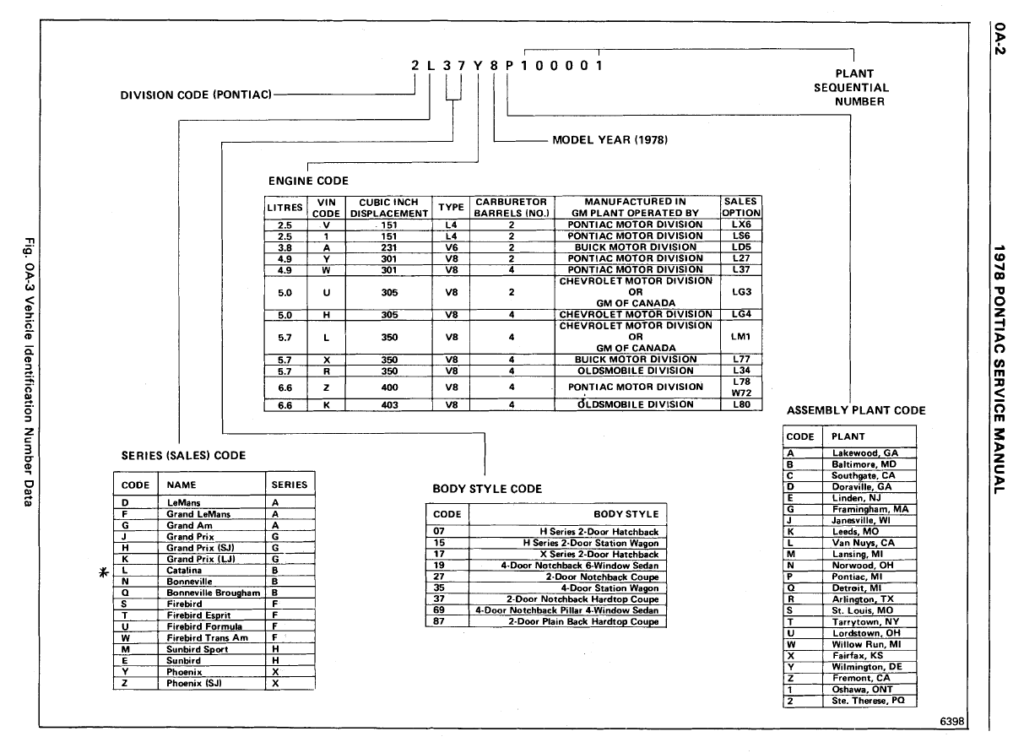
Note, though, that there is NO information about:
- Paint colors
- Interior colors
- Transmission types
- Trim level
- Wheels
- Options
- etc.
So where can we get some of this information?
Every G-Body no matter what make, model, or year will have a tag on the firewall, near the windshield wiper motor that has a lot of the same info that’s in the VIN (which can be helpful in spotting a dodgy car, if they swapped one tag but not the other) but also has information on:
- Paint codes, usually up to three different “zones” depending on the model
- Interior color code
- Interior seat type: i.e. bucket seats, full bench, split bench, and possibly further differentiation
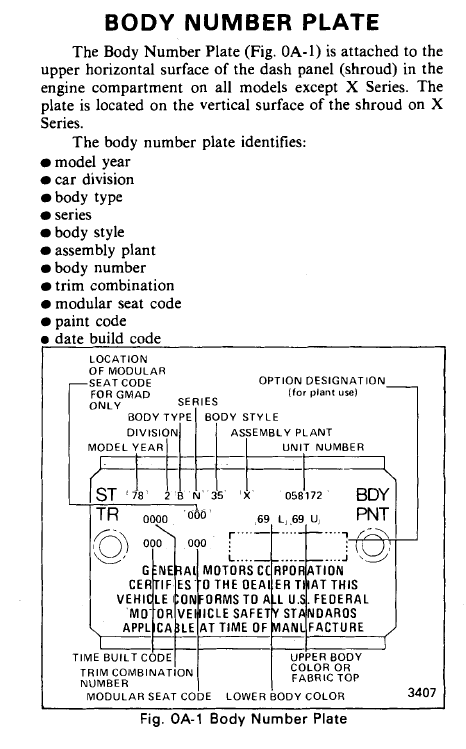
Our G-Body cars are further confusing in that almost no other information, such as accessories or options are spelled out in either of these tags, where previous years may or may not have had this info.
For a further breakdown of the options, you need to find either the build sheet, which might be in the car somewhere, in the headliner, behind or under the rear seat, on top of the gas tank, behind the dash, there is no set place where it will be, if at all… or on later G-Bodies the RPO sticker, which should be under the trunk lid, or the glovebox. That sheet or sticker will have ALL the option codes built into the car, and I’ll leave figuring out what all those codes mean for another time….
So a question like “what transmission or wheels did my car come with originally” can only be answered by the RPO sticker or build sheet, or if it still exists the original window sticker.
A question like “Is my 1981 El Camino SS a true SS?” cannot be answered from the VIN, since the SS was merely a trim level option on the El Camino. You could order them up with almost any Engine/Transmission combo or interior. My ’81 (Dino!) is an original 267 V8 with a bench seat, for example. A quick way to figure it out, though, is to check the paint codes. On the El Camino, there were three different paint zones, upper, “lower” (actually middle), and “accent” (actually lower). For the SS cars, the upper and middle paint codes will be identical, and the lower will be different. I’m sure you’ve seen some El Caminos where the upper and lower colors are the same, with a different middle section color. This is the only way (besides the RPO/build sheet) to tell a true El Camino SS. Even then it may have been possible to order a car with a specific paint scheme, I’m not for sure.
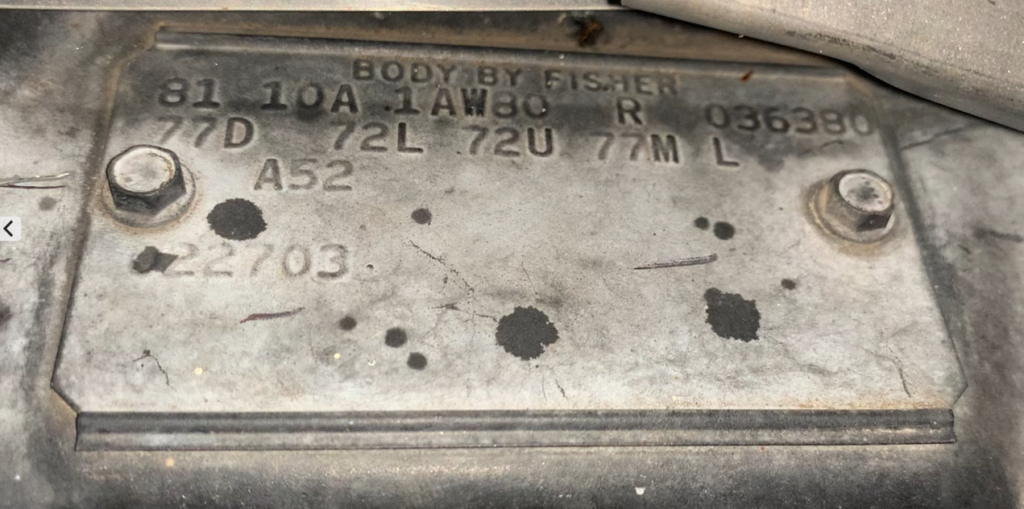
So like in the image above, from my 1981 El Camino SS, you’ll see the 72L and 72U, which indicate the upper and lower body color (Light Maple Metallic), and the 77M, which is the “accent color” or the actual lower color (Dark Maple Metallic). The 77D indicates the interior color and fabric type (Maroon) and the A52 tells you its a cloth straight bench. Here’s the 1981 Chevrolet Service Manual version…
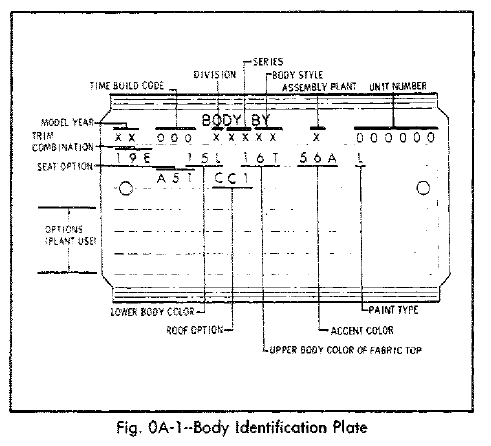
Here are some useful links on decoding your VIN and trim tag, to figure out exactly what your car should have or look like:
- 4th Generation Monte Carlo VIN Decoding
- RPO Code List
- 1960-2020 VIN Cards
- GM Body Tag Decoding
- GM Interior Colors
And like I said, wading through build sheets and RPO stickers is a story for another time…
UPDATE:
So I was told on the G-Body Forum that this article needs an update, the thread is referenced here:
https://gbodyforum.com/threads/g-body-nation-information-needs-a-tweak.82180/
Essentially it looks like there were some cars, specifically Monte Carlos, that went out of the factory in 1985 without the trim tags. If you read the thread linked, it seems there may even be more than that, so like most things g-body related, the answer is “just depends” I guess. GM’s record keeping for this era was atrocious.
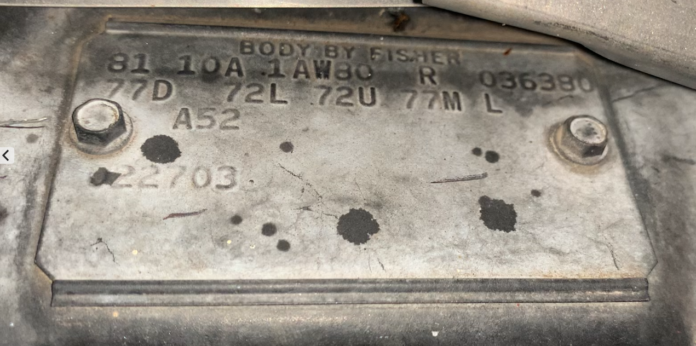
is there a second location for a VIN number, DMV Florida is stating there should be two locations on the car that shows the VIN,, I can only find one, the left side of the windshield / dash. Having a issue registering this California car.. thanks
Open the hood and look at the base of your windshield. Under the wiper blade on the drivers side, there should be a plate that looks bolted in. That should be the second location. Also check the door jam driver side. Looks like 3 total places some years.